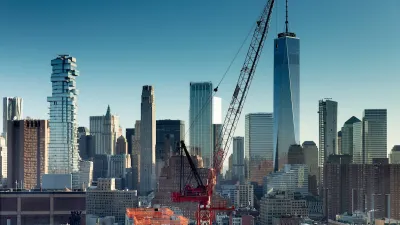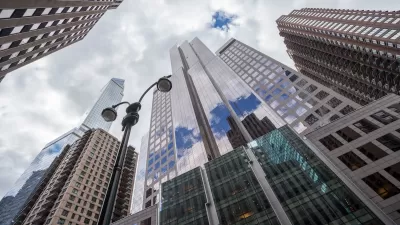The signature zoning and planning effort of the Adams administration took a step forward recently, with changes meant to clear red tape for businesses in New York City.

More details on New York Mayor Eric Adams “City of Yes” zoning reform agenda were made available recently. In June, Mayor Adams and New York Planning Director and City Planning Commission Chair Dan Garodnick revealed the “City of Yes for Economic Opportunity” zoning text amendment, the second of three zoning text amendments planned by the Adams administration and first announced in June 2022.
“The City of Yes for Economic Opportunity amendment aims to support small business growth through four pillars: revitalizing commercial corridors, filling vacant storefronts, modernizing use regulations, and investments in key growth industries,” according to an article by Veronica Rose for CityLand. “The changes to the zoning text aim to remove obstacles that slow down or prevent the growth and development of small businesses.”
The zoning amendment includes 18 policy changes in all, including a large expansion of small-scale clean manufacturing, new space for industrial uses, new allowances for businesses to operate on ground floors, and new opportunities for corner stores, among others.
“The formal public review is expected to begin this fall,” reports Rose. “Currently, the first City of Yes amendment, City of Yes for Carbon Neutrality, is in the public review process and being reviewed by community and borough boards. The third amendment, the City of Yes for Housing Opportunity, is expected to enter public review next spring.”
FULL STORY: Mayor and City Planning Unveil Details for City of Yes for Economic Opportunity Zoning Text Amendment

Alabama: Trump Terminates Settlements for Black Communities Harmed By Raw Sewage
Trump deemed the landmark civil rights agreement “illegal DEI and environmental justice policy.”

Planetizen Federal Action Tracker
A weekly monitor of how Trump’s orders and actions are impacting planners and planning in America.

Why Should We Subsidize Public Transportation?
Many public transit agencies face financial stress due to rising costs, declining fare revenue, and declining subsidies. Transit advocates must provide a strong business case for increasing public transit funding.

Understanding Road Diets
An explainer from Momentum highlights the advantages of reducing vehicle lanes in favor of more bike, transit, and pedestrian infrastructure.

New California Law Regulates Warehouse Pollution
A new law tightens building and emissions regulations for large distribution warehouses to mitigate air pollution and traffic in surrounding communities.

Phoenix Announces Opening Date for Light Rail Extension
The South Central extension will connect South Phoenix to downtown and other major hubs starting on June 7.
Urban Design for Planners 1: Software Tools
This six-course series explores essential urban design concepts using open source software and equips planners with the tools they need to participate fully in the urban design process.
Planning for Universal Design
Learn the tools for implementing Universal Design in planning regulations.
Caltrans
Smith Gee Studio
Institute for Housing and Urban Development Studies (IHS)
City of Grandview
Harvard GSD Executive Education
Toledo-Lucas County Plan Commissions
Salt Lake City
NYU Wagner Graduate School of Public Service





























